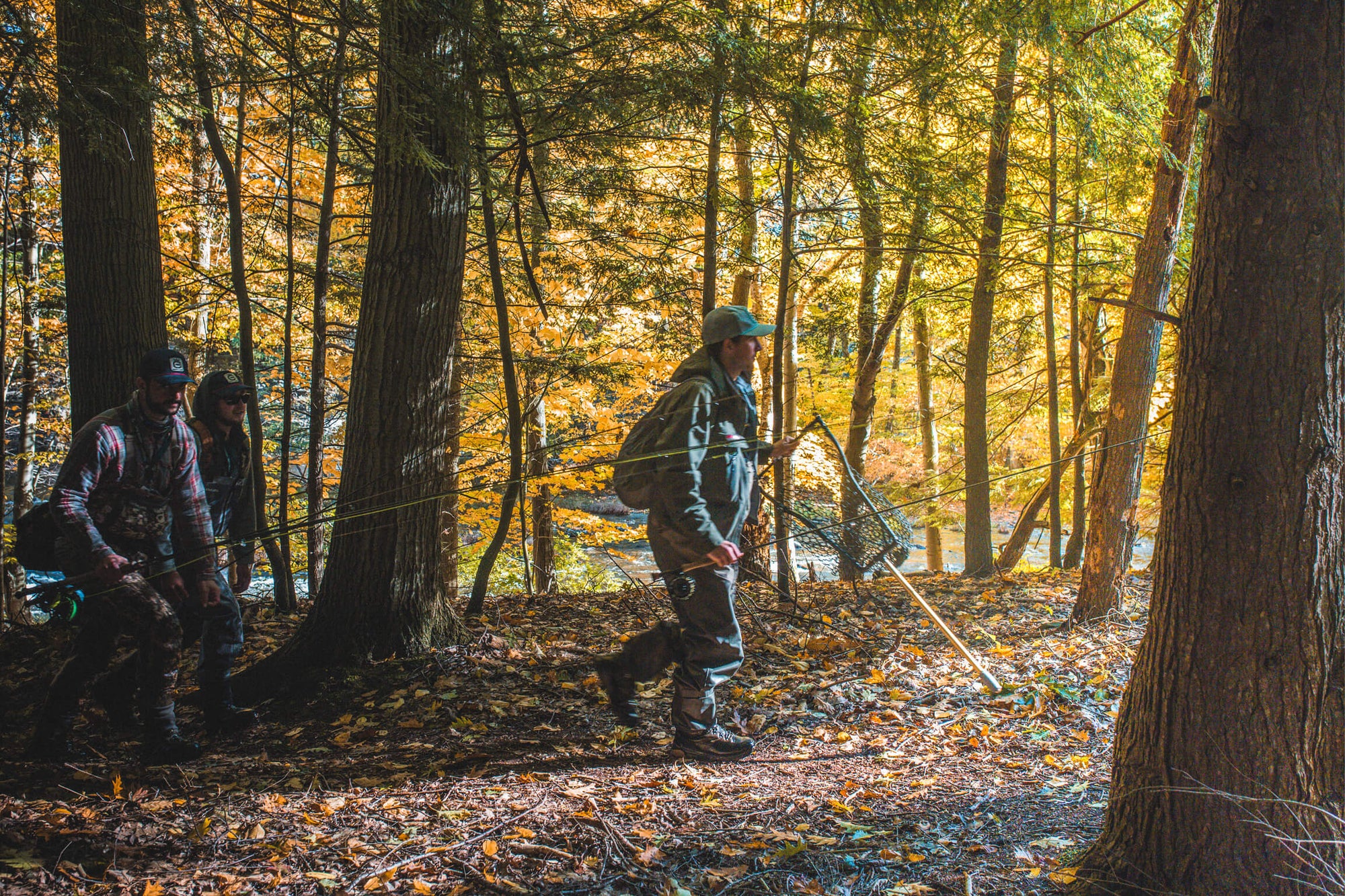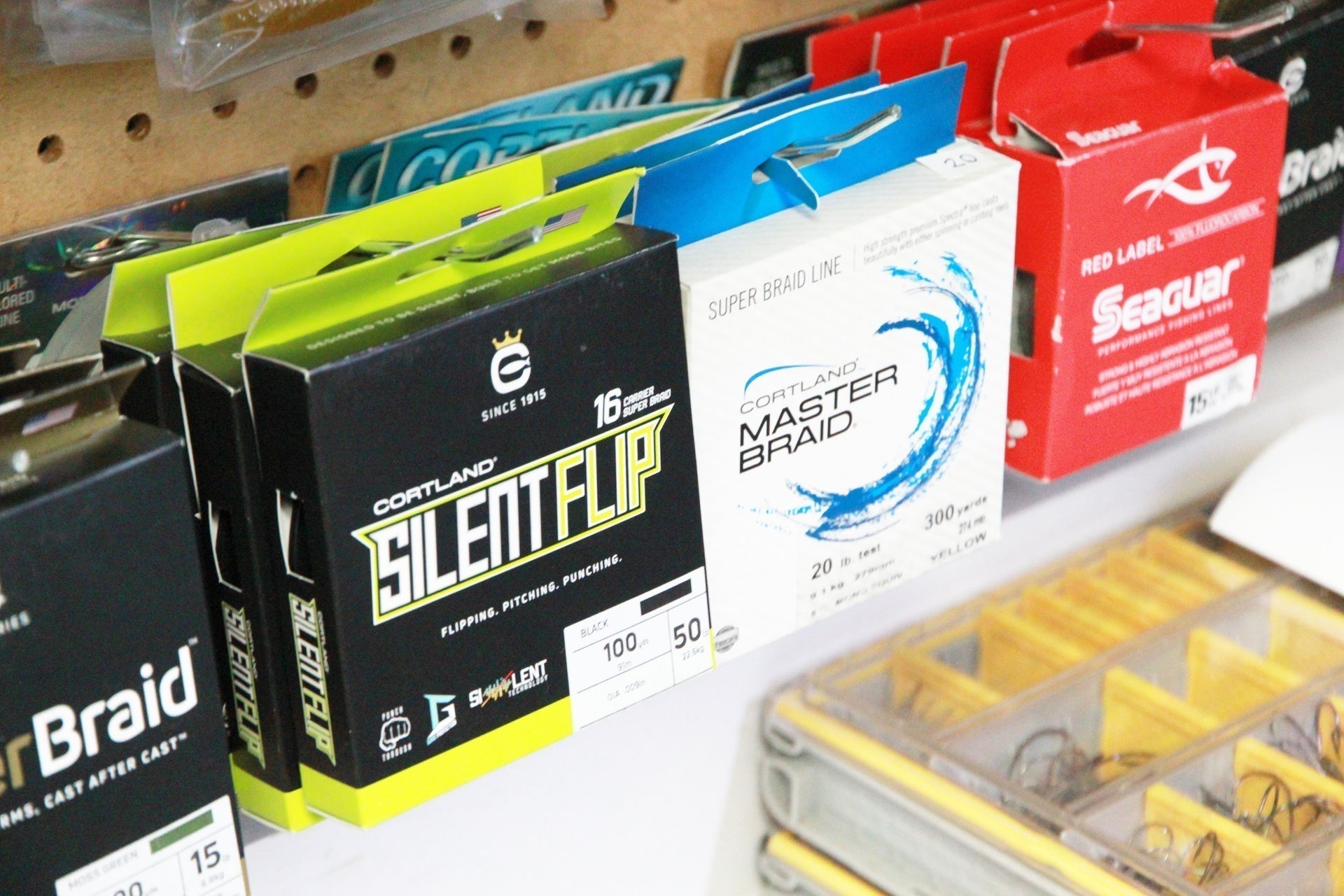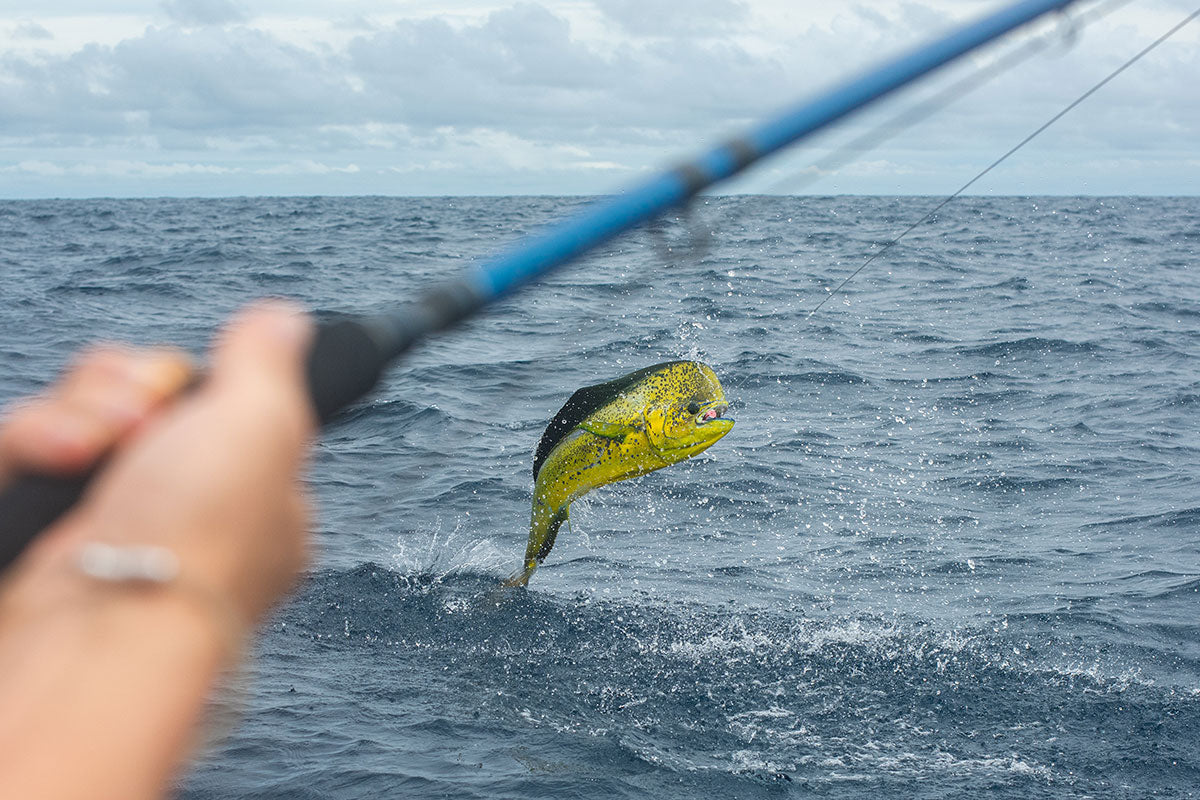Article Written by Richard Nicoletti and Matthew Borovy. Learn More About the authors Below / Article Read Time: 8 Minutes
As leaves and cooler nights fall on the Great Lakes, our lake run trout and steelhead start to migrate to their favorite tributaries in search of food. Anglers come from all over the country to have a chance to lock into one of these hard fighting Steelhead or Trout. In this article, we will give you some of our best tips and tricks to help you successfully target these fish.

Due to the popularity of the majority of these lake run fisheries, there are very few spots that are still unknown. If you make the trip north, east or west to one of these lake run fisheries, make sure you get there at a good time in the morning. I’m not talking about 8 am, I am talking about sunrise. And if the spot you have been waiting to fish for the past year is on the agenda for the AM, I would even consider getting there before sunrise.
When it comes to targeting lake run trout and steelhead, there are a lot of similarities to regular trout fishing, just on a larger scale. Two of the most common fly fishing techniques are nymphing and swinging flies. Nymphing can be a very effective technique when it comes to targeting these lake run fish, as most of the feeding occurs subsurface on eggs and aquatic insects. Swinging flies is less productive but can result in some exciting takes and is a more enjoyable way to fly fish and two hand cast.
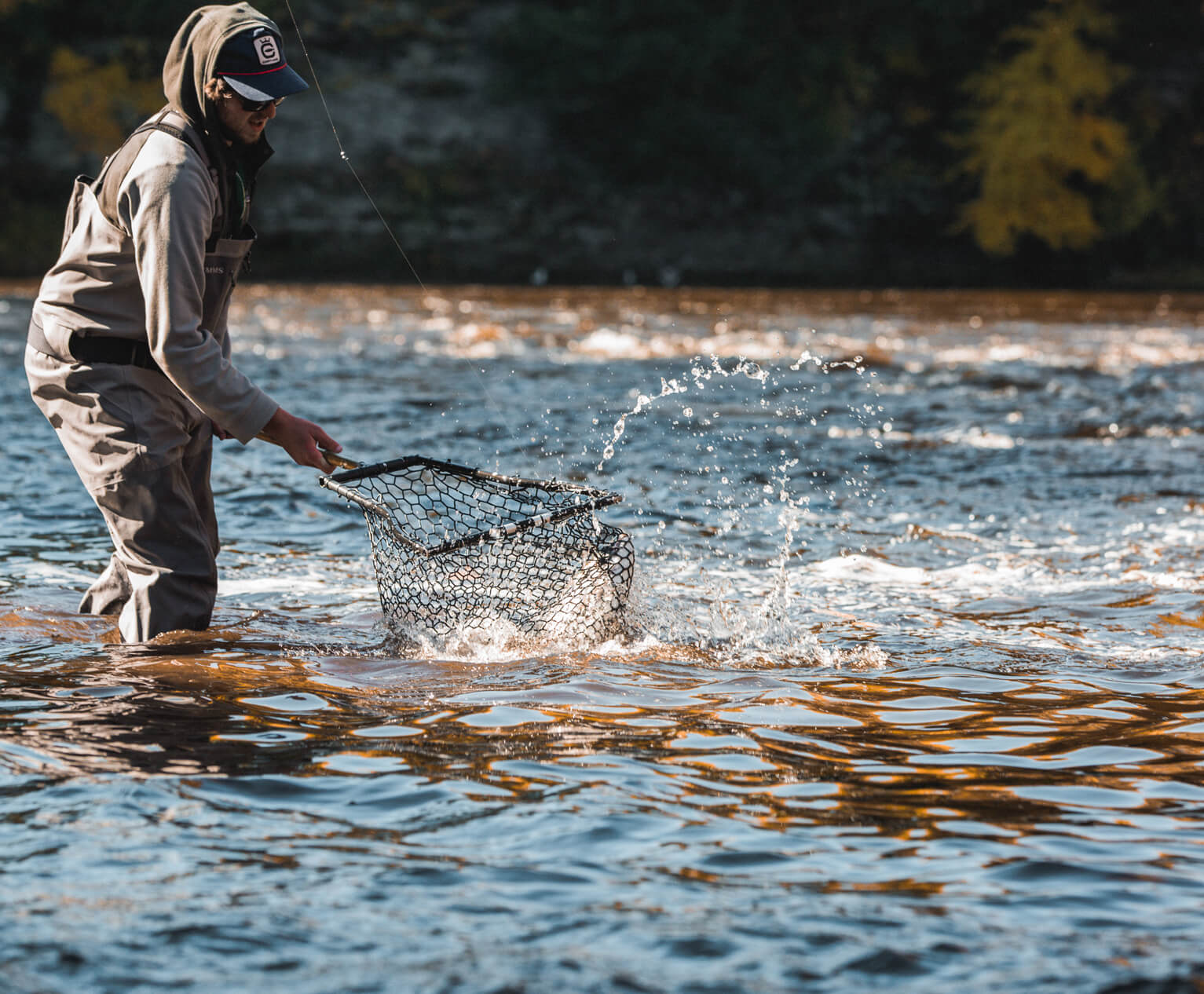
Nymphing
When nymphing for Steelhead in the fall, we generally recommend using 8-12 lb Fluorocarbon Leader Material or 0-2X Ultra Premium Fluorocarbon Tippet. We generally recommend dropping the size of your line to 6-8 LB Fluorocarbon Leader Material or 2X-3X Ultra Premium Fluorocarbon Tippet during the Winter. In the fall, these fish are fresh, fired up and have not seen much pressure from anglers yet. They are also occupying faster water and will hold in spots that do not give them much time to inspect a fly, forcing them to make a decision faster and ultimately more prone to eating. Due to this factor, your line choice can be sized up. Where as, in the Winter months, the water is generally lower, clear and the fish are lethargic. Due to the conditions and holding spots during the winter, fish generally will occupy slower, deep pools which give them more time to decide whether to eat your fly or not. Fall and Winter fishing can also dictate fly size due to the factors mentioned above. In the winter we recommend using more natural, smaller, realistic patterns where as in the fall we recommend throwing slightly larger, flashier patterns that will stick out in faster water and tend to be larger than natural eggs or insects.
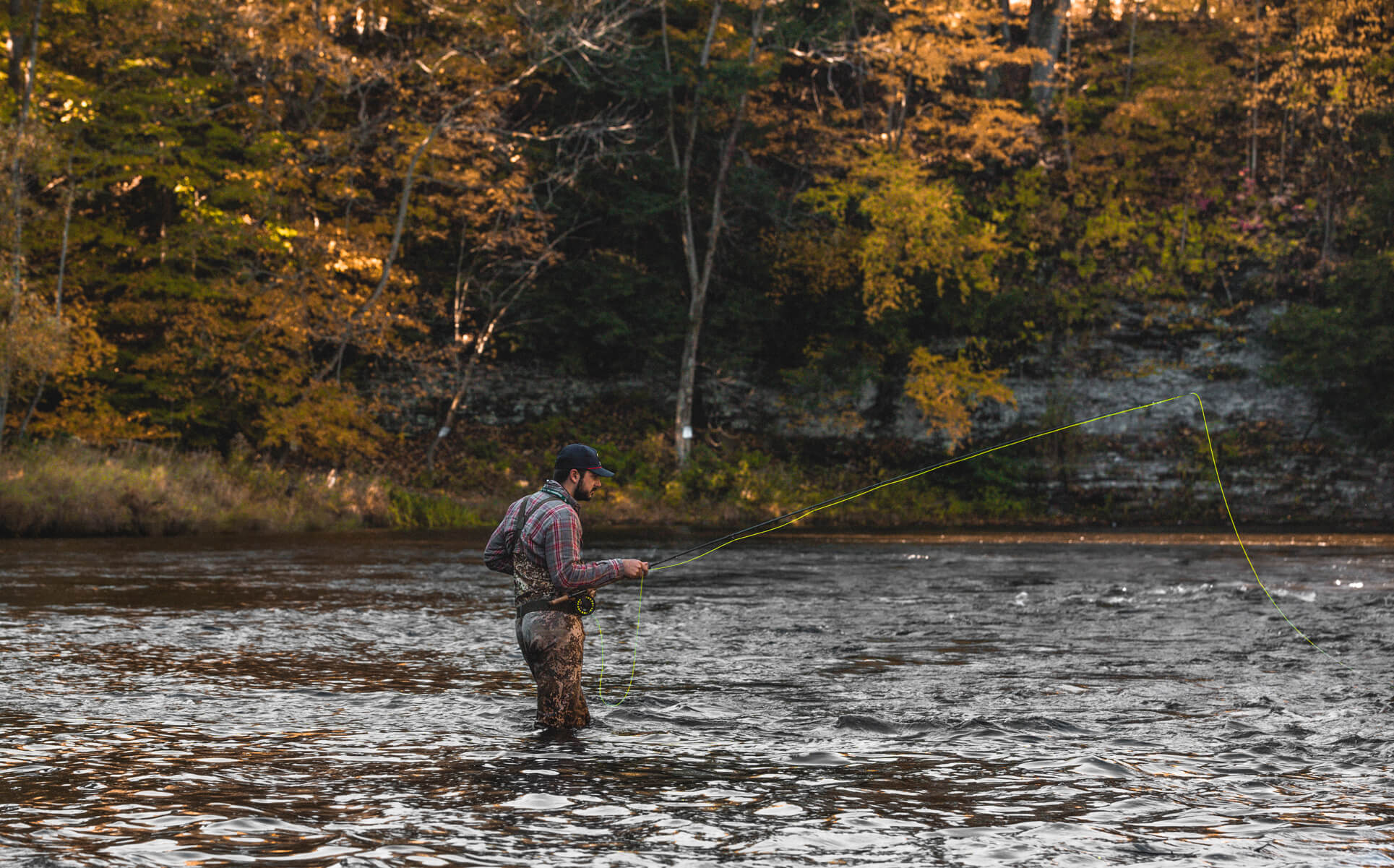
There are two main styles of nymphing which include indicator nymphing or tight line nymphing. For tight line nymphing, anglers use a weight forward fly line or more effectively, a level fly line. The benefit of using a level fly line is creating a more direct connection to your fly due to the decrease in line sag and increase in sensitivity. For a leader set up when tight line nymphing, we like to use 7-10 ft. of a level section of fluorocarbon leader material or a Salmon Steelhead nylon tapered leader. We finish this with a tippet ring, swivel or connection knot such as a blood knot. Finally, we add 2-4 ft. of fluorocarbon leader material or tippet and add our fly of choice.

When Indicator nymph fishing, we recommend utilizing our Salmon Steelhead weight forward fly line. This line is overweighted and features a long body and long rear taper which aids in roll casting/mending your drift while still having a short front taper to turn over indicator rigs. From your fly line, we recommend using a 7.5 ft. or 9 ft. 8-12 lb Salmon Steelhead Tapered leader. From the leader, we tie on 2-4 feet of Fluorocarbon Leader Material or Ultra Premium Fluorocarbon Tippet utilizing a tippet ring, swivel or connection knot like a blood knot. For indicator placement on your rig, a general rule is to set your indicator about 1.5 times the depth you are fishing. For example, if you are fishing a hole that is 5 feet deep, you want the distance from your indicator to weight to be about 7.5 feet.
Swinging Flies
Swinging flies for Great Lakes Steelhead and Trout can be demanding but very rewarding. There are many different styles of swinging flies so we aren't going to be able to cover everything but will cover the basics. When swinging flies, most anglers utilize a Switch/Spey rod of at least 11.5 ft. long to help aid in casting distance. While most dedicated spey rods are 12.5 ft. and longer, it is hard to beat the versatility of a 7 or 8 wt. switch rod on the great lakes. Switch rods can be utilized for both nymphing and swinging flies with lines like our Compact Switch. This line is a two handed Skagit style head with an integrated running line. It's great for turning over a variety of sink tips paired with weighted patterns or non-weighted patterns. Leader set ups for swinging flies are fairly simple. When utilizing sink tips, 3-4 ft. of straight 12-20 lb Fluorocarbon Leader Material will do the trick. The goal of this set up is not stealth, so keeping your leader fairly short will help keep your fly down in the water column and result in more grabs. Tapering your leader when swinging with sink tips is insignificant because the weight/aggressiveness of most shooting heads are powerful enough to transfer optimal energy throughout your whole leader.

Dialing in Proper Weight
Understanding the depth, current and fly choice all come into factor when dialing in the amount of weight on your rig. For nymphing, split shot is used to get your fly down, where as sink tips or polyleaders are used to get your fly down when swinging flies.
The goal when fishing indicator nymph rigs is to fish them just heavy enough. You want your nymph close to bottom for the entire drift, without your split shot getting stuck in the rocks and continuously dropping the indicator. If you are making clean drifts one after another and your indicator drops each time with nothing there to come tight too, you’re using too much weight. If you are watching your indicator move through the current faster than the foam line, you’re using too little weight. The speed and actions of your indicator will tell you what’s going on below the surface. You want your indicator tracking the seam/riffle at the same speed as the foam line, if not a tad slower without your weights getting stuck on bottom. Our favorite way to add weight to a leader is by adding the split shot on the tag end of the leader/tippet (picture below). If you get hung up on bottom, you can either pull the shot off the tag or break off just the shot and not lose the rest of your rig in the river. We also feel that adding shot to the tag gives your nymphs a smoother, more natural drift.
Dialing in weight utilizing sink tips and polyleaders when swinging flies can be more complex as it is not as easy as removing or adding a split shot. Time of year, flow, temperature and weight of your fly all play a factor on how you want to select a sink tip for each outing. Generally, in the fall, while water temperatures are around 60 degrees and flows are medium-low, a medium weighted sink tip will be effective in getting your fly down enough as the fish are more willing to move for a fly, even if they are holding in faster water. If the flows are higher this time of year, a 10 foot Type 6 Sink Tip will be a better choice. During winter months, fish are lethargic and usually aren't willing to move as much for a swung fly, so making sure your fly is near bottom, and fished a little slower than usual. This will give the fish more time to react, and result in more grabs. The only real way to get comfortable utilizing different tips in certain conditions is to get out there and experiment. At the end of the day, if your fly is effectively covering water and comes across a fish that is willing to eat, you're going to have success. Keep casting, cover water and stay confident.
Fly Choice
Lake run trout and steelhead spend the majority of their life swimming around the great lakes foraging on mostly baitfish. When they enter the river in the fall, they have one thing on their mind and that is to eat. Fly choices are influenced by a few different things. One of those important attributes is whether the tributary has a heavy salmon run. Tributaries of Ontario and Michigan are full of spawning, migratory lake run chinook and coho salmon dumping eggs by the thousands. The trout and steelhead entering these tributaries in the fall are looking for eggs. Not to say they won’t take a swung streamer, they are driven there in the fall simply to feed on the protein rich eggs. Unlike Lake Michigan and Ontario, Lake Erie does not have these egg wagons. The fish entering Erie tributaries are more prone to eating a swung fly because they are foraging on baitfish and nymphs rather than the majority of their diet being made up by eggs.

These fishes feeding behavior can vary depending on flow, pressure and water temperature. They are out of their element and are opportunistic towards feeding opportunities. We have always had success with natural stoneflies, caddis and bright colored copper john style flies when egg patterns aren’t getting any strikes. It is nice to have a selection of different colored eggs, stoneflies and nymphs in both small and larger sizes.
Swinging flies is largely dependent on getting your fly in front of a willing fish. Due to the presence of Salmon in many of these tributaries, natural style patterns such as egg-sucking leeches, wooly buggers or flesh flies can be extremely effective. Just because eggs are dominating the majority of these fishes diet doesn't mean that the swinging angler can't take advantage of this as well. Other attracter patterns that drive curiosity more than anything include intruder style flies and marabou-popsicle style flies. Usually these types of flies incorporate bright flashy colors such as pink, blue or purple. These undoubtedly attract attention and can result in some exciting grabs.

Gear
Making sure your gear is well suited for freezing temperatures is one of the most important aspects to fishing the fall/winter in the great lakes. Studded boots and a tight wading belt are an absolute must. When the river is below freezing, you cannot afford to slip and potentially get wet. Fishing specific gloves have saved our hands more times than I can count and I highly recommend the style that are fingerless but have full coverage option when needed. A 11 1/2 ft. 7 wt. switch rod is our rod of choice for versatility and overall performance when nymphing or swinging flies. For a single hand rod, we recommend a 10' 7 or 8 wt. such as our MKII rod.
Fish Handling
When the time comes, and you finally land that beautiful lake run steelhead or trout, make sure that fish can come back up the river next year. Yes, these steelhead and trout are entering the river to feed in the fall, but understand these fish are planning to spawn when their time comes. It's important to put enough pressure on these fish during the fight so it is not dragged out and the fish don't get overly exhausted and are unable to recover. Trust your gear and land that fish as fast possible. Use side pressure to your advantage and turn that fishes head in order to ultimately steer them to the net. Keep the fish in the water while you fumble with the camera. Place the head of the fish facing upstream into the current and let oxygen run though their gills. Do not move the fish back and forth in the water to revive it. Water entering their gills from the back will suffocate them and do the opposite of reviving. Lastly, if you are fishing in sub-freezing temps, do your best to keep that fish in the water the entire time. The gills and eyes on the fish will freeze before your friend gets his phone out of his jacket.

We wish everyone success in their lake run adventures this fall/winter and please reach out to us with any questions or recommendations we can help to make your outings more enjoyable!

About the authors
Richard and Matt are Connecticut natives who now reside in Syracuse, New York. They are full time employees at Cortland Line and our avid anglers of the many tributaries surrounding Lake Ontario including the Salmon River and other waterways.
Products mentioned in this article:
Salmon Steelhead Fly Line
Compact Switch Fly Line
Fluorocarbon Leader Material
Ultra Premium Fluorocarbon Tippet
Salmon Steelhead Nylon Tapered Leader
Tippet Rings
Sink Tips
MKII Rods
